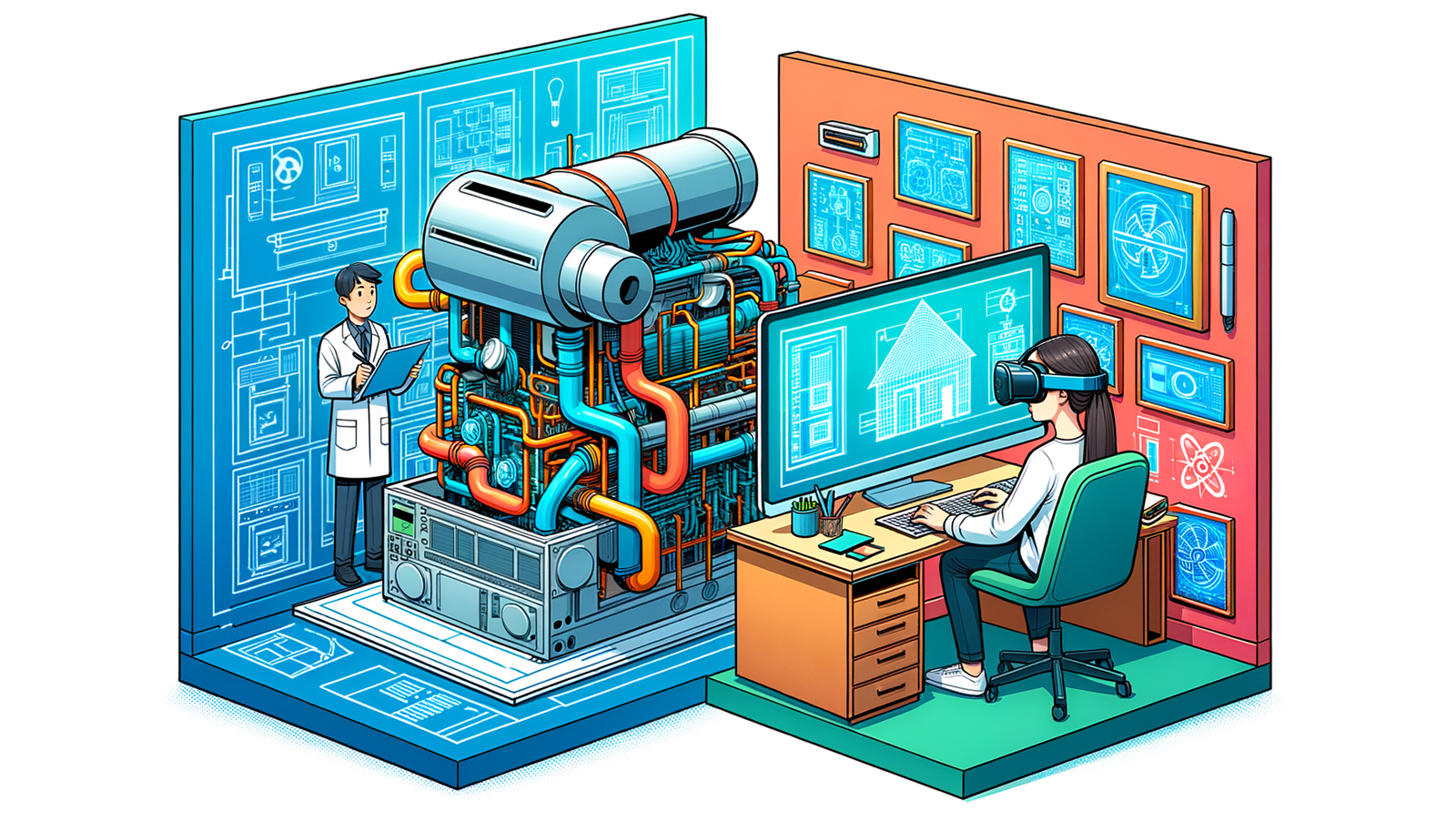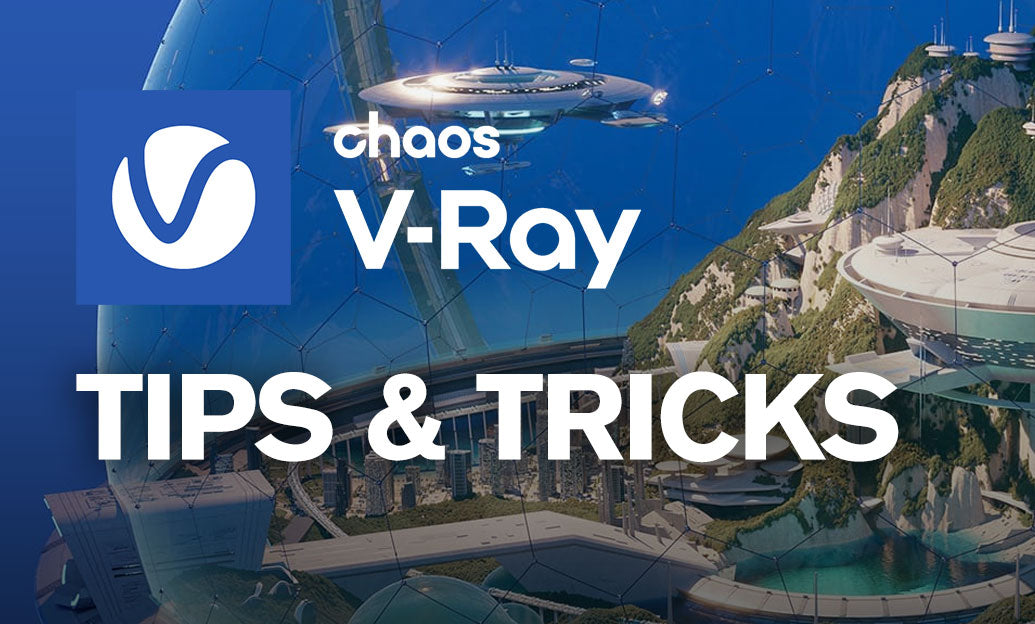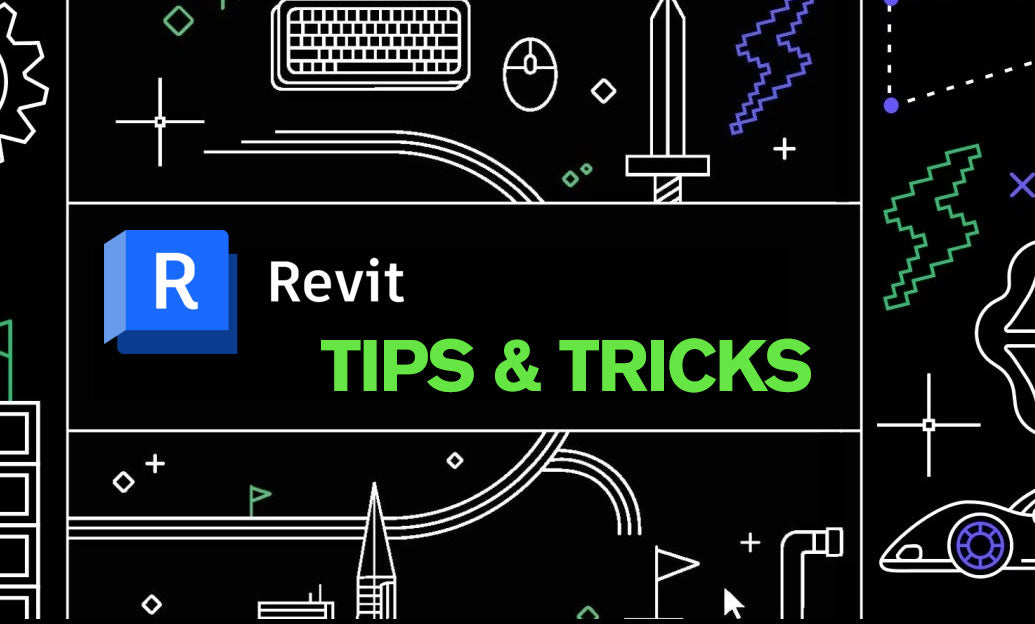Your Cart is Empty
Customer Testimonials
-
"Great customer service. The folks at Novedge were super helpful in navigating a somewhat complicated order including software upgrades and serial numbers in various stages of inactivity. They were friendly and helpful throughout the process.."
Ruben Ruckmark
"Quick & very helpful. We have been using Novedge for years and are very happy with their quick service when we need to make a purchase and excellent support resolving any issues."
Will Woodson
"Scott is the best. He reminds me about subscriptions dates, guides me in the correct direction for updates. He always responds promptly to me. He is literally the reason I continue to work with Novedge and will do so in the future."
Edward Mchugh
"Calvin Lok is “the man”. After my purchase of Sketchup 2021, he called me and provided step-by-step instructions to ease me through difficulties I was having with the setup of my new software."
Mike Borzage
Design Software History: The Evolution of Virtual Reality in HVAC Design Software: Transforming Visualization and Collaboration in Modern Engineering Practices
February 22, 2025 6 min read


Introduction to Virtual Reality in HVAC Design
Virtual Reality (VR) has increasingly become an integral part of the modern design process across various industries. In the realm of Heating, Ventilation, and Air Conditioning (HVAC) design, the incorporation of VR technologies has revolutionized the way engineers and designers conceptualize, visualize, and implement HVAC systems. This integration allows for a more immersive and interactive design experience, enabling professionals to virtually step into their designs and assess spatial and functional aspects that were previously difficult to evaluate comprehensively. The advent of VR in HVAC design marks a significant shift from traditional two-dimensional drafting and even three-dimensional modeling, propelling the industry towards more dynamic and efficient design practices.
The emergence of VR technology dates back several decades, with initial applications primarily in the fields of gaming and entertainment. However, its potential utility in design industries was quickly recognized. Early adopters in architecture and engineering began exploring VR as a tool for enhanced visualization and simulation. The ability to create immersive environments allowed designers to conduct walkthroughs of virtual spaces, facilitating better understanding and communication of design intentions. In HVAC design, this meant being able to accurately visualize ductwork, piping, and equipment placement within the context of a building's architecture, thereby improving coordination among various disciplines involved in building projects.
The significance of VR in enhancing HVAC systems design and visualization cannot be overstated. With the complexity of modern building systems increasing, the need for precise and efficient design methodologies has become paramount. VR provides a platform where HVAC designers can interact with their models in real-time, identify potential issues, and make necessary adjustments before the actual construction begins. This not only saves time and resources but also enhances the overall quality of the final installation. Moreover, VR facilitates better collaboration among project stakeholders, including engineers, architects, contractors, and clients, by providing a shared, immersive experience that conveys the intricacies of HVAC systems more effectively than traditional methods.
Historical Development of VR in Design Software
The evolution of Virtual Reality technology in design software has been marked by several key milestones that have shaped the way we approach design today. The concept of immersive virtual environments began gaining traction in the late 20th century, with early pioneers like Ivan Sutherland, often referred to as the "father of computer graphics," who developed the first head-mounted display system called the "Sword of Damocles" in 1968. This foundational work laid the groundwork for the development of VR technologies that would eventually permeate various design industries.
In the 1980s and 1990s, companies like Autodesk and Dassault Systèmes started to incorporate three-dimensional modeling capabilities into their Computer-Aided Design (CAD) software, which was a significant step towards immersive design experiences. The introduction of products like 3ds Max by Autodesk and CATIA by Dassault Systèmes revolutionized the way designers visualized and manipulated models. However, the integration of actual VR technology into mainstream design software began to gain momentum in the early 21st century, as advancements in computing power and graphics processing made real-time rendering of complex models feasible.
The early 2010s saw a surge in the development of affordable VR hardware, spearheaded by companies like Oculus VR, founded by Palmer Luckey. The release of the Oculus Rift headset in 2016 made VR more accessible, prompting software developers to explore its applications in professional fields. Design software companies responded by integrating VR support into their platforms. Autodesk introduced Revit Live, a service that converts Revit models into interactive VR experiences, allowing designers to explore their building models immersively. Similarly, Trimble Inc. launched SketchUp Viewer for VR, enabling users to engage with their SketchUp designs in virtual reality.
The integration of VR with CAD systems was further enhanced by advancements in software development kits (SDKs) and graphics engines. Platforms like Unreal Engine and Unity provided powerful tools for developers to create highly detailed and interactive virtual environments. This enabled design software to offer VR functionalities without compromising on performance or visual fidelity. The adoption of open standards like OpenXR facilitated compatibility across different VR hardware and software, promoting wider acceptance and implementation in the design industry.
Influential figures and companies in the HVAC industry also began to recognize the potential of VR. Carrier Corporation, a leading HVAC manufacturer, started investing in VR for training and design purposes. By creating virtual simulations of HVAC systems, they enhanced their ability to design more efficient systems and train technicians. Similarly, Johnson Controls implemented VR to improve design workflows and client presentations, allowing for better visualization of complex mechanical systems within buildings.
Impact of VR on HVAC Design Processes
The integration of Virtual Reality into HVAC design processes has yielded numerous benefits, fundamentally transforming how professionals approach design tasks. One of the primary advantages is the enhanced visualization capabilities that VR offers. Designers can immerse themselves in a three-dimensional representation of their HVAC systems, allowing for a deeper understanding of spatial relationships and system interactions within a building's architecture. This immersive experience facilitates the identification of potential conflicts and optimizes the routing of ductwork, piping, and equipment placement, which is crucial in complex building projects.
VR technology enables prototyping and testing of HVAC designs in a virtual environment before actual implementation. Designers can simulate different scenarios, adjust parameters, and immediately observe the outcomes, significantly improving the efficiency of the design process. The ability to receive real-time feedback and make instantaneous adjustments reduces the design cycle time and minimizes errors that could lead to costly modifications during construction.
Additionally, VR enhances collaboration among stakeholders in HVAC projects. By providing a shared virtual space, engineers, architects, contractors, and clients can collectively experience the design, facilitating better communication and understanding. This collaborative approach ensures that all parties are aligned and can contribute to optimizing the design.
The use of VR in HVAC design also addresses several challenges inherent in traditional design methods. For instance, complex HVAC systems can be difficult to represent accurately in two-dimensional drawings, leading to misunderstandings or oversights. VR overcomes this by providing a realistic and interactive representation of the system. Moreover, it aids in training and education, allowing new engineers and technicians to familiarize themselves with HVAC systems in a controlled, risk-free environment.
However, the early adoption stages of VR in HVAC design were not without challenges. Some of the limitations faced included:
- High initial costs: Early VR hardware and software required significant investment, which could be prohibitive for smaller firms.
- Technical limitations: Early VR systems had limited resolution and could suffer from latency issues, affecting the realism and usability of the virtual environment.
Furthermore, there was a learning curve associated with adopting new technologies. Designers and engineers needed training to effectively utilize VR tools, and integrating VR workflows into existing processes required careful planning. Despite these challenges, the technological advancements and decreasing costs over time have mitigated many of these initial obstacles.
Overall, the impact of VR on HVAC design processes has been profoundly positive. The technology has empowered designers to create more efficient, effective, and collaborative design solutions. By enhancing spatial understanding and providing real-time feedback, VR has become an invaluable tool in modern HVAC design practices.
Future Prospects and Conclusion
Looking forward, the future of Virtual Reality in the HVAC industry appears promising, with emerging trends and technological advancements poised to further revolutionize design practices. One significant trend is the integration of VR with Artificial Intelligence (AI) and Machine Learning (ML) algorithms. This combination allows for intelligent systems that can predict optimal HVAC configurations, simulate environmental impacts, and provide automated suggestions during the design process. The use of AI enhances the capabilities of VR by introducing adaptive and responsive environments that can adjust to user inputs in more sophisticated ways.
Another developing area is the convergence of VR with Building Information Modeling (BIM) technologies. As BIM becomes increasingly central to architectural and engineering workflows, integrating VR creates a more immersive and interactive BIM experience. This integration facilitates better visualization of complex data and improves decision-making processes. Additionally, advancements in cloud computing and data storage enable more seamless and collaborative VR experiences, allowing multiple users in different locations to work together in a shared virtual environment.
The ongoing innovations in hardware technology are also set to enhance the applicability of VR in HVAC design. Lighter, more comfortable, and higher-resolution VR headsets are making prolonged use more feasible, while technologies like haptic feedback and augmented reality (AR) are expanding the ways in which users can interact with virtual models. The development of wireless VR systems and advancements in graphics processing further enhance the usability and accessibility of VR tools.
In conclusion, the transformative impact of Virtual Reality in HVAC design visualization is undeniable. VR has not only improved the efficiency and accuracy of design processes but also reshaped the way professionals collaborate and communicate. The technology has bridged the gap between conceptual design and real-world implementation, making it easier to visualize and solve complex spatial challenges. As VR continues to evolve, it will likely become even more integrated into everyday design practices, offering new opportunities for innovation and creativity.
The enduring legacy of VR in shaping modern design practices and educational frameworks cannot be overstated. By providing immersive learning experiences, VR is enhancing education and training in the HVAC industry, preparing the next generation of engineers and designers with the tools they need to excel. The continued advancement and adoption of VR technology hold the potential to further revolutionize the HVAC industry, making design processes more efficient, collaborative, and intuitive than ever before.
Also in Design News

Cinema 4D Tip: Matrix-Driven Instancing for High-Performance Scattering
December 20, 2025 2 min read
Read More
V-Ray Tip: V-Ray Anisotropy Techniques for Brushed Metals and Hair
December 20, 2025 2 min read
Read More
Revit Tip: Revit Nested Tagging: Shared Nested Families and Roll-Up Parameters
December 20, 2025 2 min read
Read MoreSubscribe
Sign up to get the latest on sales, new releases and more …


